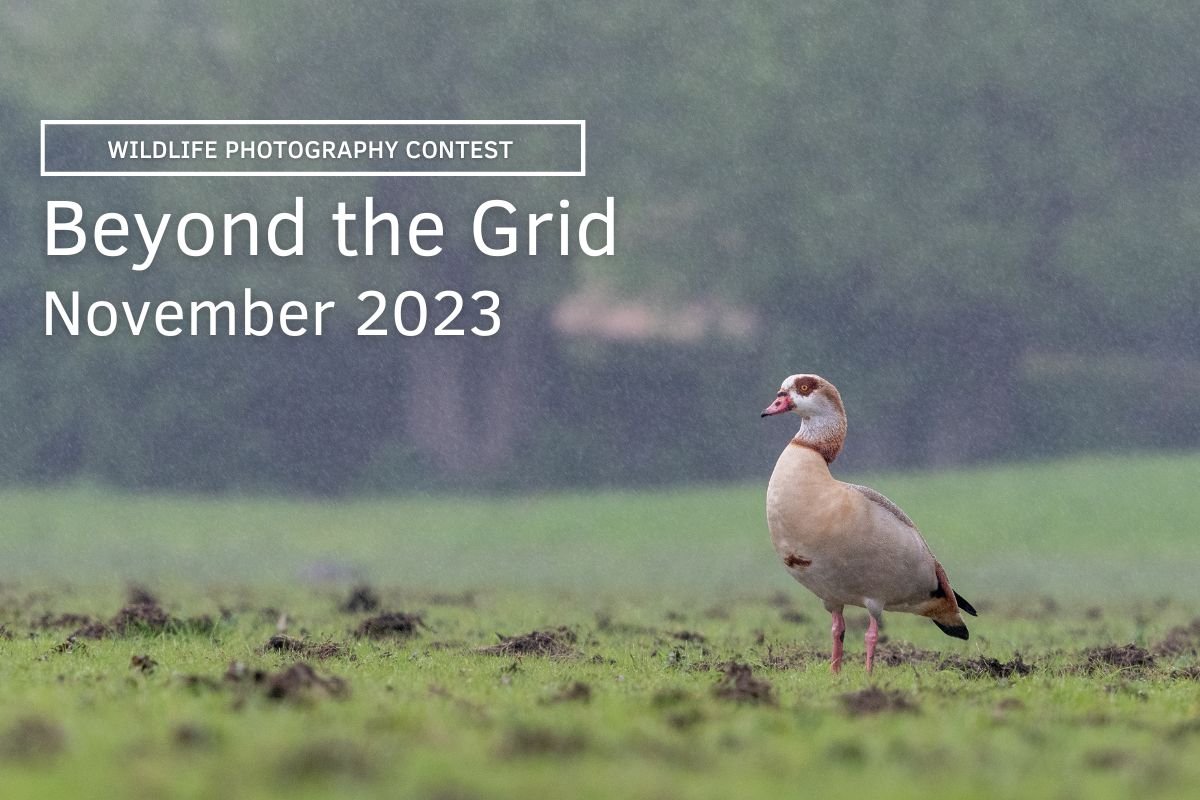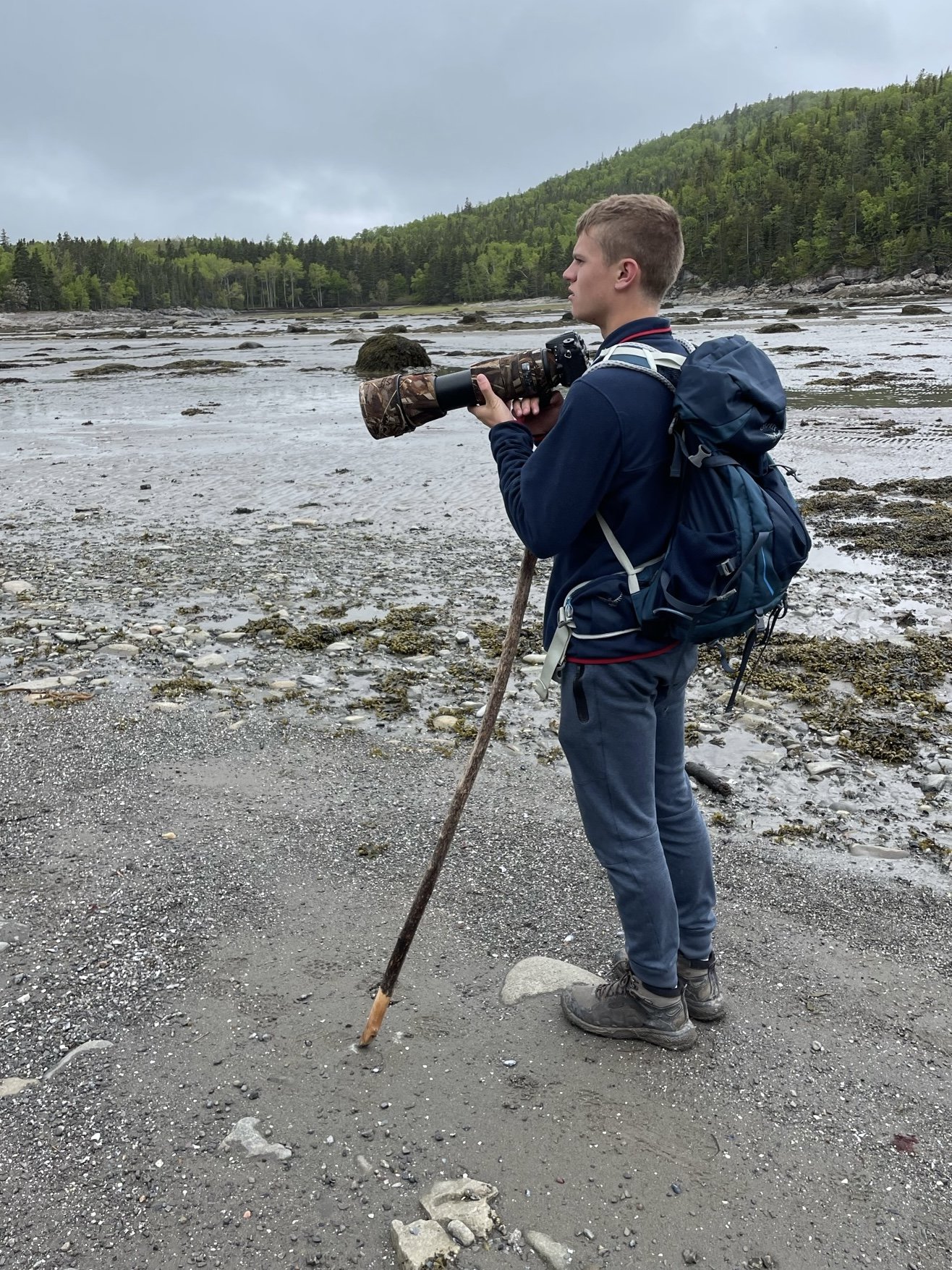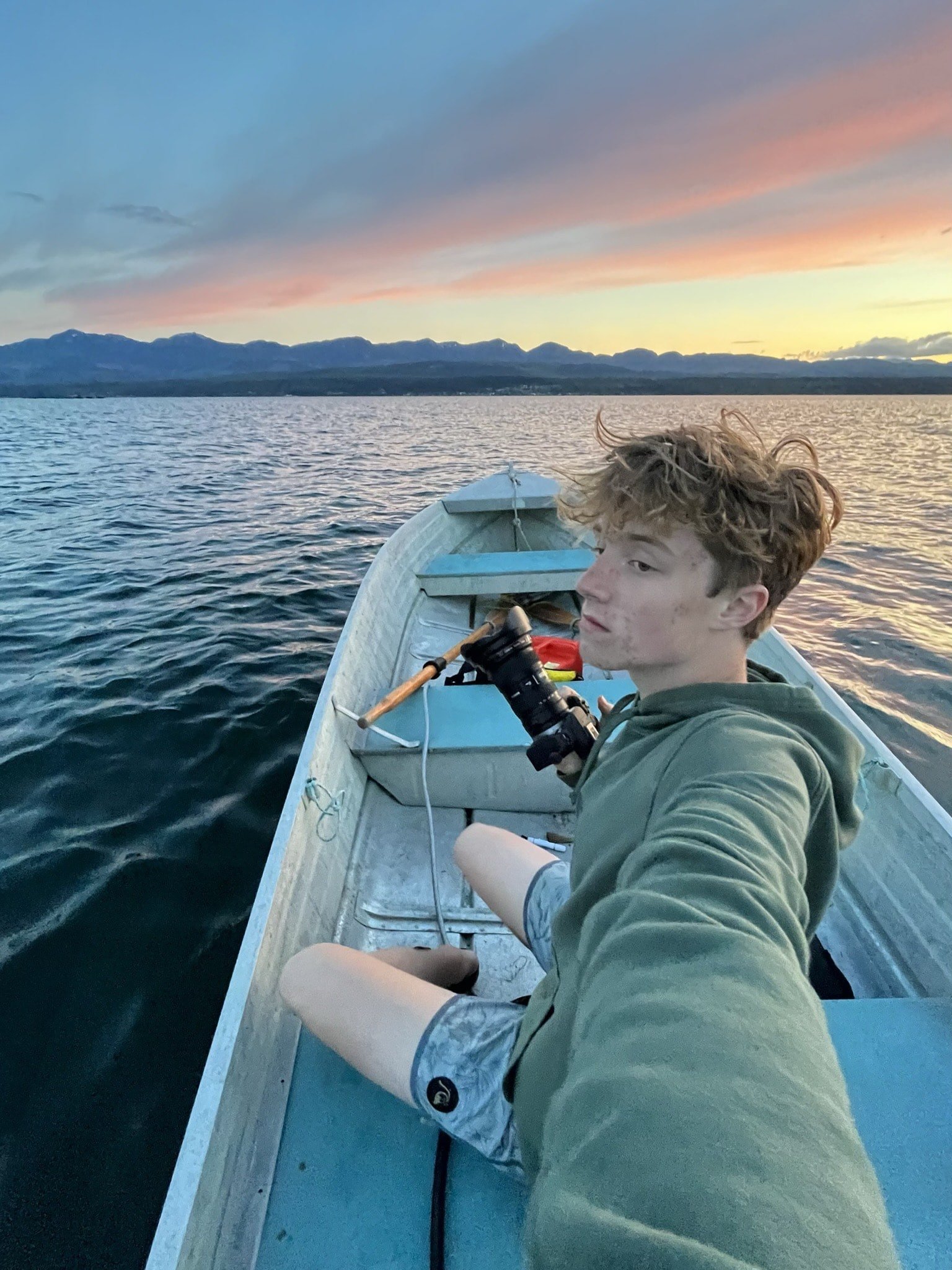Beyond the Grid Wildlife Photography Contest-November 2023
Happy New Year and welcome to the seventh edition of Beyond the Grid, a wildlife photography contest where the community's best wildlife photographers shine beyond Instagram. Thank you to everyone who took part in the last competition. It was a very tight competition this time around with over 30 submissions from around the world.
Keep scrolling to see the November 2023 winners!
And if you missed the previous contests, you can see the winners here.
Submit your best photos of 2023 by February 9th.
Did you miss submitting your November photos? No problem.
Our next contest is the 2023 Beyond the Grid Photographer of the Year where we’re accepting your best photos from 2023. Regardless of whether you took part or won a previous contest. We want to see your best work!
To be featured in the contest, submit your photos via this form by Friday, February 9th at 11:59 pm Eastern and use the tag #BTGBestof2023 on Instagram. We can't wait to see your work!
Related articles
Wildlife photography tutorials
If you're getting into wildlife photography, you might find my tutorials helpful. They’re packed with wildlife photography tips and techniques to help you improve your skills.
Why Beyond the Grid?
Although Instagram has become the most popular way to share our work, it’s not always optimized for this purpose. It also prioritizes people who can best market their work rather than produce the best photography.
That’s why Beyond the Grid aims to give visibility to more wildlife photographers outside of Instagram on a medium that better represents the fruits of our hard work.
Every month, we will shine a spotlight on the community's best wildlife photographers. Being a wildlife photographer can be challenging, but the results, as you can see from the work of the individuals below, can be absolutely breathtaking.
Advantages of getting involved
Participating in Beyond the Grid has many benefits:
Free entry to a wildlife photography competition (most are usually paid).
Your work is shared not only on social media but on this website ( with thousands of monthly visitors).
You join a community of like-minded individuals passionate about nature.
Get constructive feedback from photographers like you to improve your photos.
The top 5 winners become judges for the following competition.
I am always looking to improve this competition for its participants, so keep an eye out for updates. If you have any suggestions, please let me know.
How the winners are selected
The judges spend a long time evaluating each photo anonymously and without seeing who the photographer is using three categories:
Visual impact: how impactful the image is when you see it.
Composition: how effective the composition is to make a pleasing photo.
Technical quality: This includes everything from proper focus, sharpness, dynamic range, noise, and more. How do the technical elements affect the photo?
Visual impact is scored out of 10 and composition and technical quality out of 5. Once all the judges have submitted their scores, I sum up all their scores to get the top 10 to see if there are any ties.
If there’s a tie, I then look at which of the tied images scored the highest on visual impact to break the tie. If there’s a tie again, then I check the composition scores and technical quality if there’s yet another one. The top 5 are the month’s winners and 6-10 are the honorable mentions.
Beyond the Grid - November 2023 Winners
Let’s get into the November 2023 winners of the Beyond the Grid contest.
You will find the top five winners and five honorable mentions in order.
The judges provided their feedback for these, including what they liked and what could be improved.
Photography is subjective, so take any constructive criticism with a grain of salt.
1) Curlew clouds - Shea Vavra
Long-billed curlew | Canon R7 + Canon EF 100-400mm f/4.5-5.6L IS II USM @ 100mm | ISO 2500 f/5 1/2000s
Description:
I got off work at around 3:00 and drove an hour to get to my favorite beach. I could see that the sunset was going to be an amazing one with all the unique color and cloud texture. I parked and ran to the beach with only 30 minutes of daylight left, hoping to find a bird. I found this curlew and shot it vertically to capture the cloud texture.
Why the judges loved it:
The awesome contrast of a completely back-lit bird and the color of the ocean at sunset.
The lovely pastel colours in the sky and a well-timed shot as the bird takes a step forward.
The tones and a glimpse at this stunning bird’s environment.
The colour palette and the vertical composition add more of the sky.
What could be improved:
Consider removing some of the visually distracting elements, like the patches of moss, on the beach.
There could be more contrast and refinement in the edit.
There’s some motion blur in the background waves. Consider shooting closer to 1/100 to introduce more motion blur in the waves.
A lower angle with the bird at eye-level and just a bit larger in frame could improve the shot.
2) Eye contact - Karim Bouzidi Idrissi
White-breasted nuthatch | Canon R10 + RF 100-400 | 1/80 f/8 ISO1250
Description:
I was photographing a barred owl when this nuthatch came pretty close to me to check me out. The light from the sunset was so beautiful at that moment, I just had to take some time to photograph it. My favorite shot was this frontal one!
Why the judges loved it:
The pose, lighting, colours, and the overall shot are incredibly stunning and impressive.
The eye contact.
The light makes for a really nice background and side lights the bird’s face.
What could be improved:
Consider placing the bird further to the right of the frame to emphasize the direction of the light.
The out-of-focus twig on the right of the image could be edited out and the crop could be adjusted to fit the bird a little closer to the center. This way you draw attention to the subject while having the light coming from the left.
It looks like the bird’s back is actually the main focus, which can be distracting since the viewer's eyes are pulled toward the bird’s super-sharp back feathers rather than its eyes.
3) Barred owl - Ulysse Brault-Champion
Barred owl | Nikon D500 + Nikon 200-500mm | ISO 2500 1/800s f/5.6
Description:
A beautiful barred owl was resting in the rain.
Why the judges loved it:
Great composition and framing with the branch.
The perch is nice and the owl looking directly into the camera makes for a beautiful portrait.
An amazing framing effect is given by the branches and foliage.
What could be improved:
Don’t be afraid to push your settings to drop your ISO. Low shutter speeds are achievable on a static subject like an owl.
There are several small distractions in the photo that could be removed either in camera or in post.
There could be better color accuracy. The colours are seemingly off with a lack of greens and a strange teal tone.
There are some crunchy remnants of noise and the subject isn’t particularly sharp.
4) Curlew strut - Shea Vavra
Long-billed curlew | Canon R7 + Canon EF 100-400mm f/4.5-5.6L IS II USM | ISO 2500 f/5 1/2000s
Description
I was really happy with how this photo turned out. I had been trying to place the curlew in front of a light patch of sand to make the silhouette stand out. I shot it at a relatively wide focal length to capture the sky.
Why the judges loved it:
The colors are great and the bird is well positioned in the frame between the sea foam. There’s also awesome action from the wave in the background.
The composition here is great. Making the bird small in the frame was a great idea to showcase the beautiful environment and the colours of the sky.
Even with the bird small in frame, the background is interesting enough to make a good habitat shot.
What could be improved:
Cutting out the dark line at the bottom of the picture or taking the photo from a lower angle to avoid including it might make the photo look better.
The sea foam above the bird’s head could be distracting to some.
A little more work on the edit would bring out the scene even more.
5) Curlew sunset - Shea Vavra
Long-billed curlew | Canon R7 + Canon EF 100-400mm f/4.5-5.6L IS II USM | ISO 2500 f/5 1/2000s
Description:
Everything lined up perfectly for this photo. I had been following this curlew for about 20 minutes waiting for it to turn so I could photograph its profile in the light I wanted. The direct backlight ended up being too intense to get the right exposure, so I went for the diffused side light which I ended up loving.
Why the judges loved it:
The overall quality of the photo, especially the rendering, is amazing.
The sunflare adds color and directionality to the photo.
The lighting is awesome and the environment is very cool.
Making the bird small in the frame is a great idea to showcase the beautiful environment and colours of the sky.
What could be improved:
The backlit sea foam looks great so I would lean into this and maybe try this shot with a whole bunch of seafoam behind the subject.
Showing the actual sun would be great for this shot as well.
There are some remnants from editing in the bottom right corner that could be improved.
Having the sun barely visible in the frame is distracting and pulls your eyes away from the bird.
The photo could benefit from a lower angle to match the subject's eye level, and a wider crop to include more of the sunset.
This shot might be even better without the moss patches.
Beyond the Grid - Honorable mentions
6) Sunset owl - Karim Bouzidi Idrissi
Barred owl | Canon R10 + Canon RF 100-400 | 1/30 f/8 ISO 500
Description:
One of my favorite moments from this fall was seeing this very active barred owl hunt during sunset. It offered amazing views as it perched low in the woods, all when the light was at its best. I couldn’t have asked for better than that amazing experience especially since I found it while returning to the car after not having used my camera all day.
7) First time for everything - Keith McGarrity
Northern saw-whet owl | Canon RP + Sigma 150-600C @ 375mm | ISO 1250/ 1/400 f/5.6
Description:
This was my first time at this location and my first encounter with a saw-whet owl. I didn’t realize how small they were and how well they could hide in the dense cedars.
8) Great horned owl - Rain Saulnier
Great horned owl | Canon R10 + Sigma 60-600mm | ISO 6400 510mm 1/160, f/6.3
Description:
Moments after coughing up a pellet, perched on a neighbourhood chimney overlooking the City of Calgary.
9) Long-tailed ducks - Charles Villeneuve
Long-tailed ducks | Nikon D500 | ISO 500, 1/5000, f/4.0
Description
It was a typical early winter morning, with a little bit of snow everywhere, looking for owls in vain and not expecting much. Later, I ended up on the shore where I was excited to see three of these ducks diving pretty close to the shore, where I could lay right next to the water and enjoy this sight.
10) Mallard - Jing Liu
Mallard | Canon R10 + Canon RF 100-500mm | 1600 ISO 640 F7.1
Description
I caught this mallard splashing around and I decided to make the photo black and white to really show the difference between the duck's dark shape and the bright light behind it. The droplets in the top third of the image evoke stars, frozen in the night sky, while the dynamism of the moment is reflected in the water below.
Meet the Beyond the Grid judges
Beyond the Grid’s top five winners become judges for the following month. Thank you to our October 2023 winners, Elliot, Quinn D., Thomas, Quinn S., and Paige for their participation as judges in this contest.
We look forward to welcoming you back in the future!
Elliot Naef
Elliott Naef is a wildlife photographer from Quebec, Canada. He has always had a passion for nature but only started capturing it on camera in the summer of 2021. Over the years, he has developed a profound knowledge of Canadian wildlife and has made a deep connection with it. He aims to share his wildlife encounters so that others have the chance to witness nature’s beauty.
Elliot’s gear:
Quinn Diaz
Quinn grew up birding and herping before he knew there were words for those hobbies and has continued to do so regularly. He only got into photography a couple of years ago as a way to enhance his appreciation for wildlife, he found it much more challenging and exciting than expected. Quinn guides birding and photography trips around the Great Salt Lake for Pitta Nature Tours and is a freelance musician based in Utah.
Quinn’s gear:
Thomas Cadilhac
Thomas is a photographer from Montreal studying biology in Rimouski. He started photography during the pandemic and now has fun trying to capture wildlife in his own artistic way. Thomas is always trying to learn and improve as a wildlife photographer.
Thomas’ gear:
Quinn Smilgis
Quinn Smilgis is a 16-year-old photographer from British Columbia, Canada. He began shooting in late 2021. Since then, he’s learned as much as he can about wildlife photography and the animals surrounding him. He is eager to learn more and continue to improve.
Quinn’s gear:
Paige Savoy
Paige is a wildlife photographer and naturalist based in Ontario Canada. She’s been doing wildlife photography for 3 years but photography in general since 2017.
Paige’s gear:
Thank you to all the participants!
With over 30 photos from wildlife photographers from the community, the seventh Beyond the Grid wildlife photography contest is in the books!
Thanks to all participants for showcasing their incredible work this month.
Submit your best photos of 2023
Our next competition is the 2023 Beyond the Grid Photographer of the Year where we’re accepting your best photos from 2023. To be featured in this issue, submit your photos via this form by Friday, February 9th at 11:59 pm Eastern and use the tag #BTGBestof2023 on Instagram.
Want to become a better wildlife photographer?
If you are interested in learning more about the technical and artistic side of photography to take your photos to the next level, check out these awesome tutorials that can help you take amazing wildlife photos!















